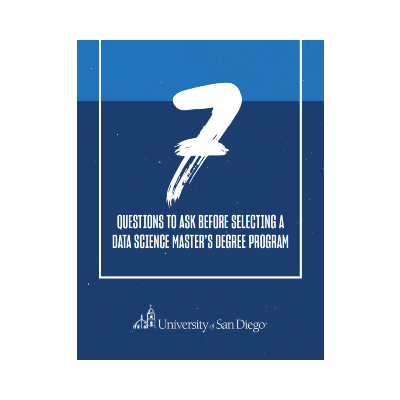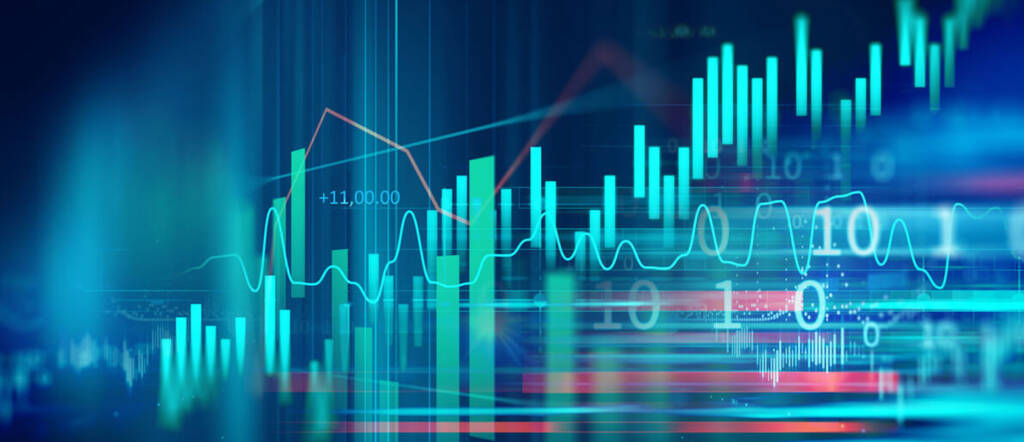By Dallin Munger
What is Predictive Analytics?
There are four different types of data analytics commonly used in data science: descriptive analytics, diagnostic analytics, predictive analytics, and prescriptive analytics. Descriptive analytics answer the question of what is happening, diagnostic analytics answer the question of why something is happening, and prescriptive analytics answer the question of what action needs to be taken. The focus of this article and weblog is to provide a summary introduction of predictive analytics, which answers the question of what is going to happen.
Predictive analytics can be simply defined as the use of historical and current data to predict future outcomes. Different methods used to create predictions include statistical techniques and machine learning. One such method for producing predictions is predictive modeling. While it may seem predictive modeling and predictive analytics are interchangeable terms, there is a difference. In short, predictive modeling is the use of statistical models to determine the probability of an outcome. Therefore, predictive modeling is a tool that can be used to produce predictive analytics.
Why is Predictive Analytics Important?
Predictive analytics help solve complex problems and have a wide variety of different applications. Predictive analytics can be used to minimize risk in decision making, detect fraudulent activity, identify trends, and improve efficiency. These are just a few of the general benefits of utilizing predictive analytics. In summary, predictive analytics allows businesses and organizations to investigate the future to help improve decision-making in the present.
Selected Modern Applications of Predictive Analytics
For a more detailed insight into predictive analytics and what it is and what it can do, a few modern applications are provided in this post.
One such application is the use of predictive analytics to predict and prevent credit card fraud. Using historical usage data, financial institutions can understand the buying patterns of customers and predict when a transaction is fraudulent. This process helps protect both the credit card company and the cardholder in case of a fraudulent transaction, allowing the transaction to be nullified if it is predicted to be fraudulent.
Another common application of predictive analytics is seen in the entertainment industry. Recommendations provided through streaming services have become a regular part of media consumption, and these recommendations are provided using predictive analytics. Historical user behavior is used by these streaming services to predict which content an individual user is most likely to interact with. This helps services retain customers, and it helps provide a better experience for users.
3. Healthcare
Predictive analytics can also be used to predict and improve outcomes in healthcare. One such application is through the prediction of chronic diseases in individuals. Using health data, providers can predict the risk for an individual to develop a specific chronic disease. Providers can then intervene earlier with these individuals, helping prevent more severe health problems in the future.
Predictive analytics can also help providers better treat patients who have been admitted to the hospital. Using the vitals of a given patient, providers can predict when that patient may be facing a potential threat to their health and well-being. Providers can then offer treatment to these individuals, in advance, before more severe symptoms set in, making treatment more difficult.
Several other applications of predictive analytics exist within the healthcare industry, and more continue to be developed. This is an important and exciting application that demonstrates just how impactful predictive analytics can be.
4. Marketing
Another common application of predictive analytics is seen in marketing. One example is in predicting which individuals are most likely to convert. Using historical data to determine which campaigns converted which individuals, companies can then predict who they should target their marketing towards. This application once again benefits both sides. It provides consumers with more targeted advertisements that are less likely to be spam and more likely to be relevant, and it saves businesses money in marketing expenses.
5. Retail
The retail industry also has several predictive analytics applications. One such application is inventory management. Using predictive analytics, retailers can predict when they will need to restock on a specific product. This helps retailers provide better customer satisfaction, as they can avoid running out of stock of a popular item.
From the above examples, predictive analytics have a wide and varying application across several industries. These were only a few selected applications across specific industries. More applications exist within each sector and across more industries. Other industries where predictive analytics are utilized include education, government, manufacturing, security, and many more.
The Ethics of Predictive Analytics
Predictive analytics is an exciting field with numerous applications, as explained above. However, it is important to recognize the role of ethics in predictive analytics. There are several concerns surrounding predictive analytics, and any practitioner of predictive analytics should be aware of these concerns. For example, privacy concerns are one significant issue commonly brought up concerning predictive analytics. Practitioners must ensure that they heed any privacy guidelines attached to the data they use for predictive analytics.
Another common issue in predictive analytics is bias of historical data. Often, bias exists in historical data. This bias can be perpetuated through a predictive model relying on that historical data, thus creating poor predictions that will not provide value. Practitioners must be aware of potential biases in their data and seek to ensure that predictive models do not reflect historical bias.
An Opportunity to Be at the Forefront of Innovation
Predictive analytics is wide-ranging and is only increasing in usage. According to the AP, the predictive analytics market is expected to have a compound annual growth rate of 21.9% from 2020-2027, increasing its value from $7.32 billion in 2019 to $35.45 billion in 2027. Now is clearly an exciting time to join the field of data science and gain skills in predictive analytics. New and innovative applications are coming forward every day, and opportunity is abundant.
To take advantage of the opportunity presented by the explosion of predictive analytics, one must gain the necessary skills and learn the tools of the trade. R and Python are two key tools used by data scientists as they develop and deploy predictive models. A fundamental understanding of statistics, machine learning, and predictive modeling are also necessary. Learning these skills and tools and being able to use them effectively is critical to the success of a data scientist in the field of predictive analytics.
The University of San Diego’s innovative online Master of Science in Applied Data Science program prepares students to thrive and make immediate impacts in the field of data science. Designed and taught by active data science experts in close collaboration with key industry stakeholders, USD’s MS-ADS program teaches necessary technical skills to go along with a deep understanding of how to apply findings (including hard and soft skills) in real-world applications. For more information, contact an enrollment advisor.




![Preview image of Master’s Comparisons [Data Science vs. Analytics vs. 3 More]](https://onlinedegrees.sandiego.edu/wp-content/uploads/2022/01/masters-in-data-analytics-1.jpg)
